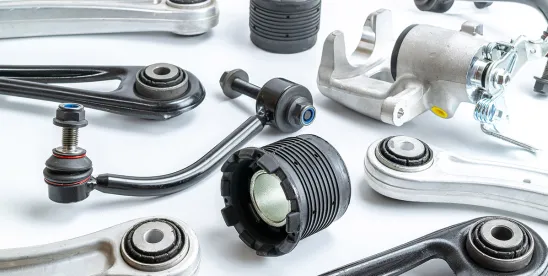Key Takeaways:
-
What Happened: The Federal Trade Commission (FTC) seeks public comment on a proposed expansion of EnergyGuide labeling requirements to new product categories, and a requirement to include repair information in consumer product labeling.
-
Who’s Impacted: Consumer appliance and product manufacturers and distributors
-
What They Should Consider Doing in Response: Review the FTC’s advance notice of proposed rulemaking and consider submitting comments regarding proposals that may affect their businesses or customers.
Manufacturers may soon have to include energy efficiency labeling and appliance repair instructions for a broad range of new consumer appliances. Specifically, the FTC is exploring amending its Energy Labeling Rule to require EnergyGuide labels on some new consumer products and additional categories of lamps, as well as instructions for how consumers could repair broken products. The FTC’s advance notice of proposed rulemaking has not yet been published in the Federal Register; public comment on the Commission’s proposals will be due 60 days following such publication.
Background
The FTC’s Energy Labeling Rule (promulgated in 1979 pursuant to the Energy Policy and Conservation Act of 1975) requires energy labeling for major home appliances and other consumer products to help consumers compare the energy usage and costs of competing models. It also contains labeling requirements for refrigerators, refrigerator-freezers, freezers, dishwashers, water heaters, clothes washers, room and portable air conditioners, furnaces, central air conditioners, heat pumps, plumbing products, lighting products, ceiling fans, and televisions. Specifically, the Rule requires manufacturers to attach yellow EnergyGuide labels to many covered products and prohibits retailers from removing these labels or rendering them illegible. In addition, it directs sellers, including retailers, to post EnergyGuide label information on their websites and in paper catalogs from which consumers can order products.
EnergyGuide labels for most covered products contain three main disclosures: estimated annual energy cost, a product’s energy consumption or energy efficiency rating as determined by U.S. Department of Energy (“DOE”) test procedures, and a comparability range displaying the highest and lowest energy costs or efficiency ratings for all similar models. The Rule requires marketers to use national average costs for applicable energy sources (e.g., electricity, natural gas, or oil), as calculated by DOE in all cost calculations. The FTC periodically updates comparability range and annual energy cost information based on manufacturer data.
Proposed Expansion of Covered Products
In addition to the product categories listed above, The FTC now proposes to expand EnergyGuide labeling to the following products:
-
Clothes dryers
-
Air cleaners/purifiers
-
Miscellaneous refrigerator products (e.g., coolers [such as wine chillers] and products with warm and cool compartments)
-
Low-brightness lamps, full-color “tunable” lamps, or other lighting products not covered by DOE standards
-
Residential ice makers
-
Humidifiers
-
Decorative hearths and outdoor heaters
-
Cooking tops (e.g., kitchen ranges)
-
Electric spas
In response to its announcement, the FTC seeks public comment as to whether or not EnergyGuide label requirements for the above product categories would assist consumer purchasing decisions; how potential market changes may affect label benefits; the typical energy use and energy efficiency of various product models on the market; and what content and formatting requirements would be appropriate.
Additionally, the FTC seeks public input as to whether or how it could change existing labeling requirements to ensure consistency with current consumer shopping behavior, for instance, by requiring that EnergyGuide labels be affixed to “showroom-ready” appliances but for other products, including the required information only on or in product packaging. The FTC will also consider general changes to the Energy Labeling Rule’s label content and formatting requirements.
Right to Repair?
Stepping into more controversial territory, the FTC is also considering potential requirements related to product repair instructions. The Energy Policy and Conservation Act of 1975 empowers the Commission to require manufacturers to provide consumers with “additional information relating to energy consumption, including instructions for the maintenance, use, or repair of the covered product” if the Commission finds that such information would assist with purchase decisions or in the use of the product, and would not be unduly burdensome to manufacturers. 42 U.S.C. § 6294(c)(5). The FTC has never exercised its authority under this provision to require repair instructions in product labeling.
Now the FTC seeks public comment as to whether lack of access to repair instructions for covered products is an existing problem for consumers; whether providing such information would assist consumers in their purchasing decisions or product use; whether providing such information would be unduly burdensome to manufacturers; and any other relevant issues. The Commission’s rulemaking in this area could affect a broad range of product manufacturers, which might need to revise product labeling or even alter product designs to accommodate consumer repair.





 />i
/>i
